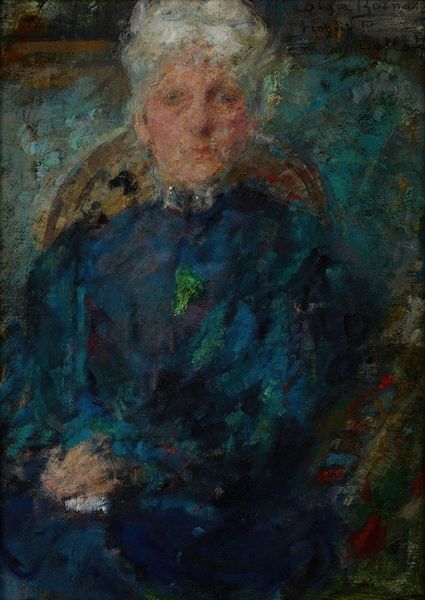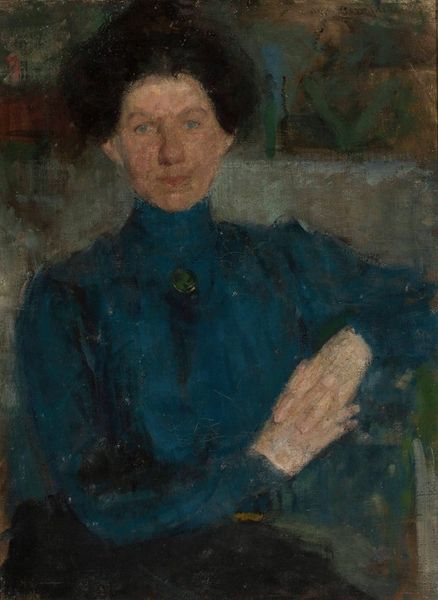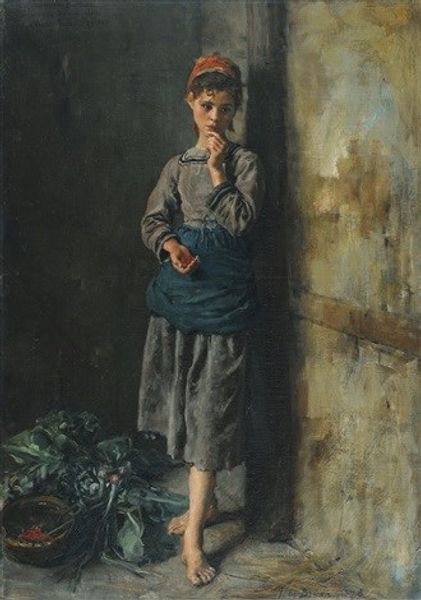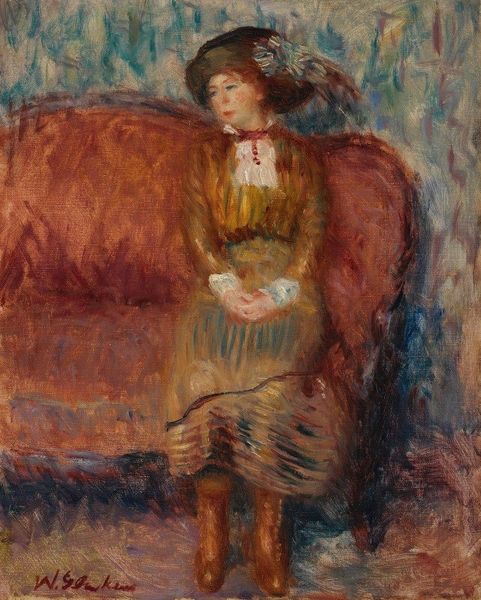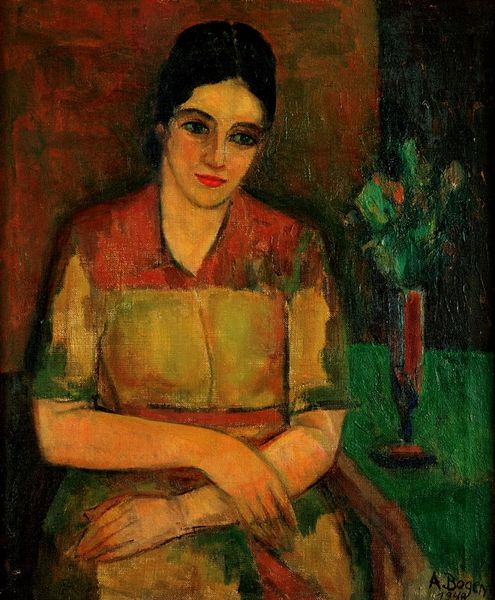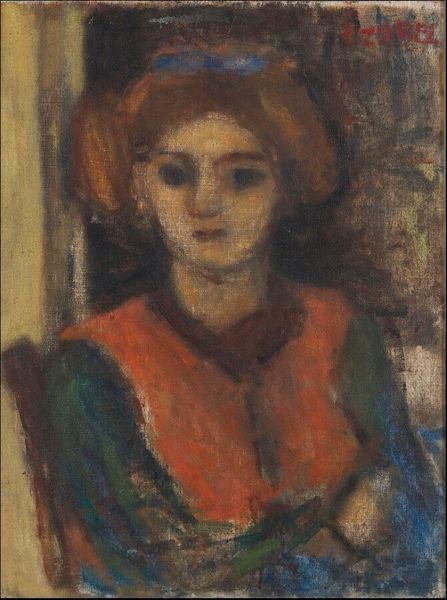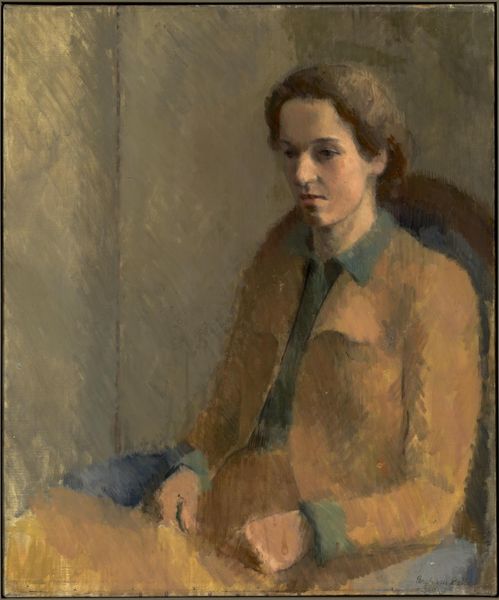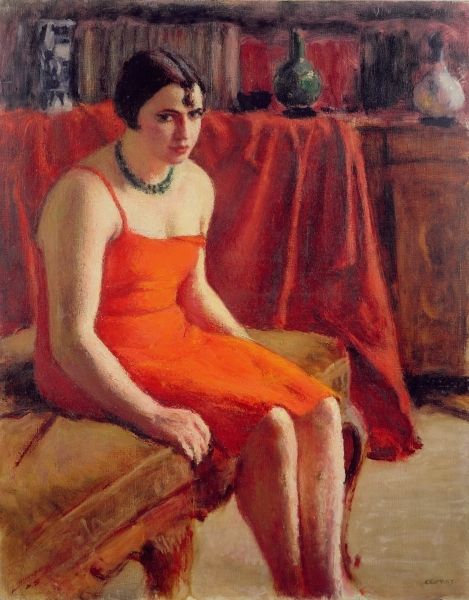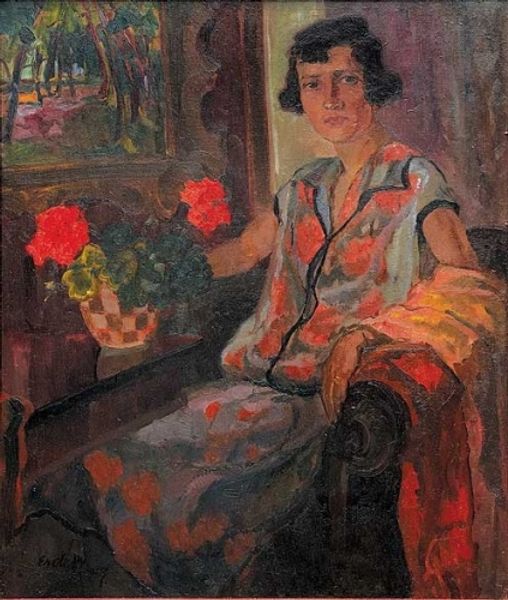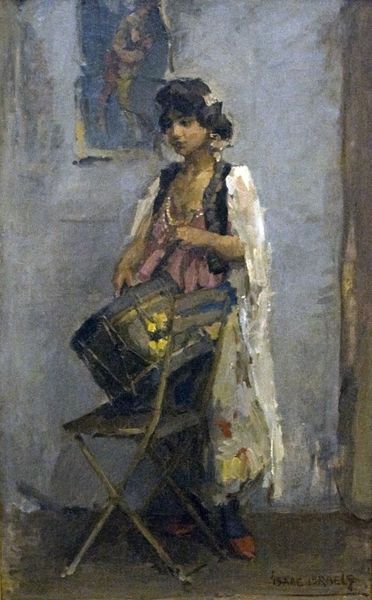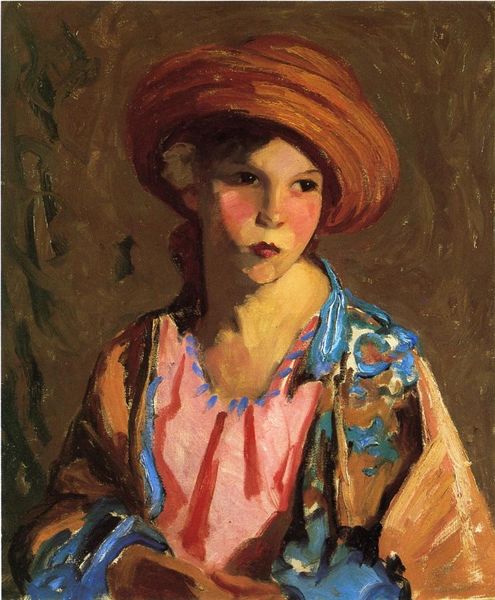
Copyright: Public Domain: Artvee
Editor: We're looking at Tadeusz Makowski's "Girl in a Green Dress with a Basket," painted in 1914 using oil. There's a certain solemnity to it, I think – a working-class feel. What jumps out to you when you see this piece? Curator: I’m immediately drawn to the materiality of the paint itself. Notice how Makowski hasn’t attempted to hide the physical presence of the oil. The brushstrokes, the texture, it all speaks to the labor involved in its production. Do you see how the subdued palette reflects the economic realities of the subject’s world? Editor: Yes, the earthy tones definitely suggest a connection to the land, maybe rural life. I wonder about the basket – is it simply a prop, or does it symbolize something more? Curator: Consider the basket within a framework of production and consumption. Baskets are typically handmade; thus, do you believe that their presence hints at self-sufficiency? Notice, too, the child’s dress: what inferences can be made from this detail regarding clothing and available commodities? Editor: I hadn't thought about it that way. It does seem to highlight the resourcefulness inherent in making everyday objects and clothing. The "handmade" aesthetic really brings the realities of labor into focus. Curator: Exactly! Makowski isn't just painting a portrait, they're showing us the world this girl inhabits, and hinting at the systems that shape her life. Editor: So, by looking closely at the materials and how they're used, we gain a deeper understanding of the subject’s place in society at that time. Thanks, I appreciate this fresh look at what seems like a very basic composition. Curator: Of course. It’s fascinating how the simple act of painting becomes a form of social commentary when we consider its materiality and the context in which it was created.
Comments
No comments
Be the first to comment and join the conversation on the ultimate creative platform.
